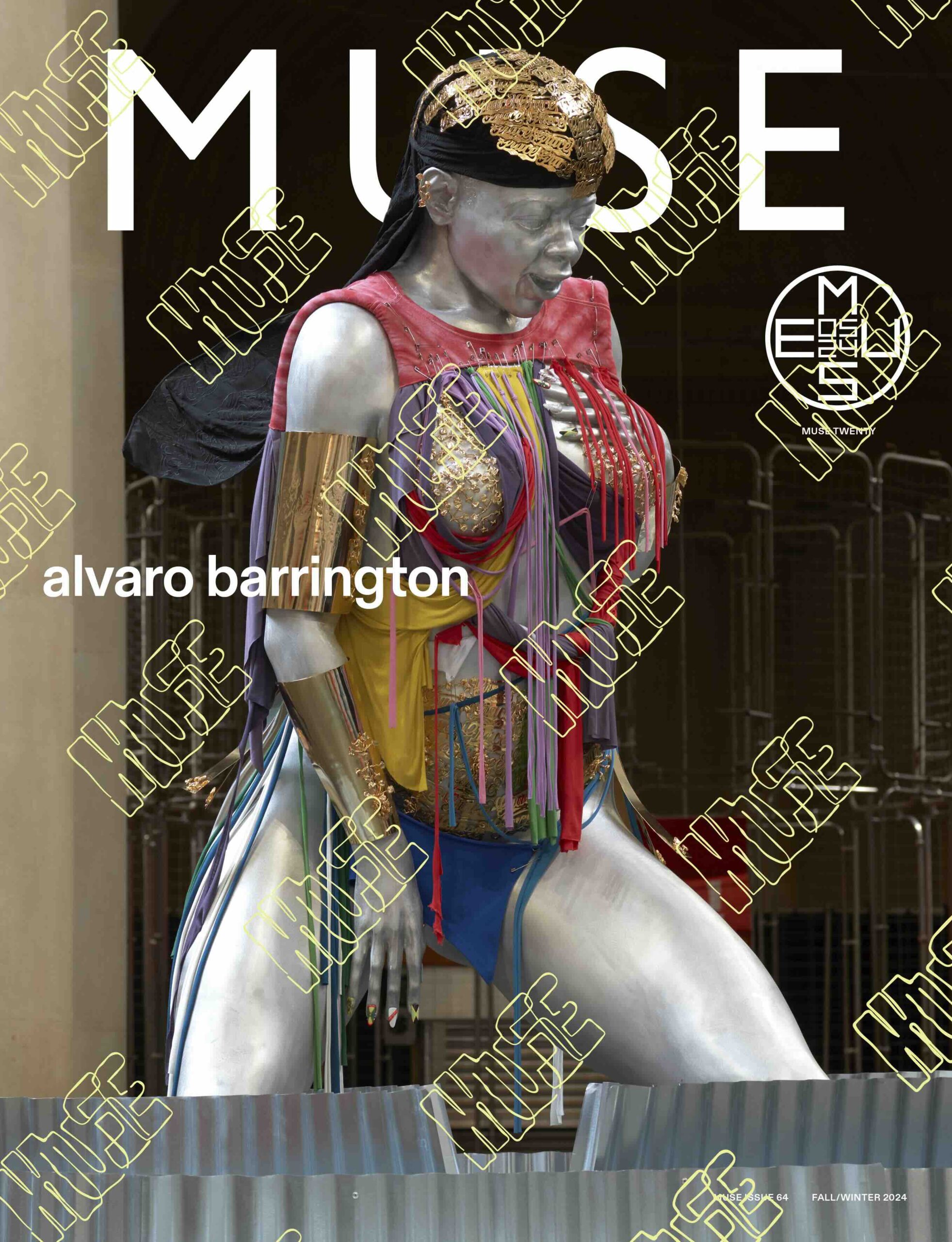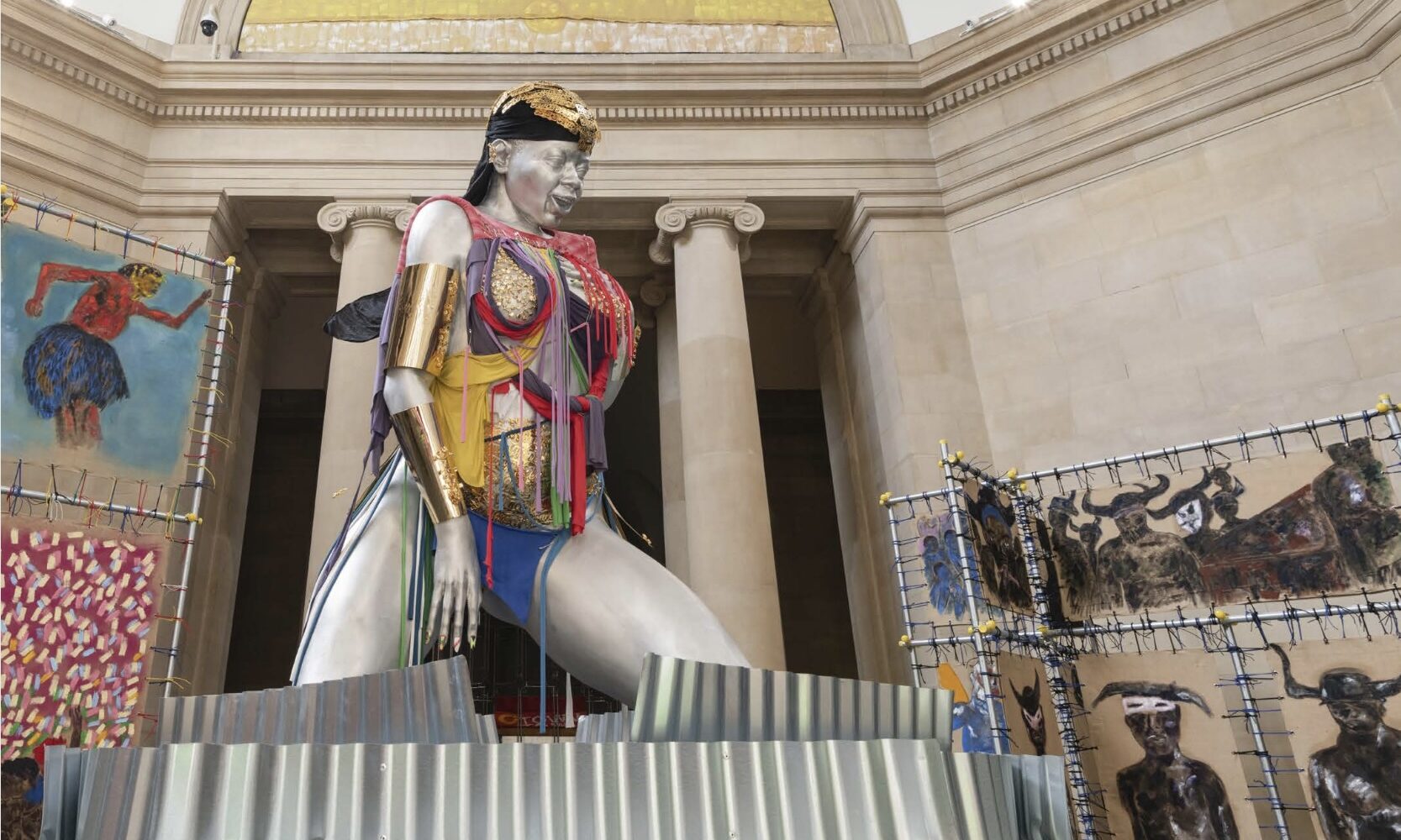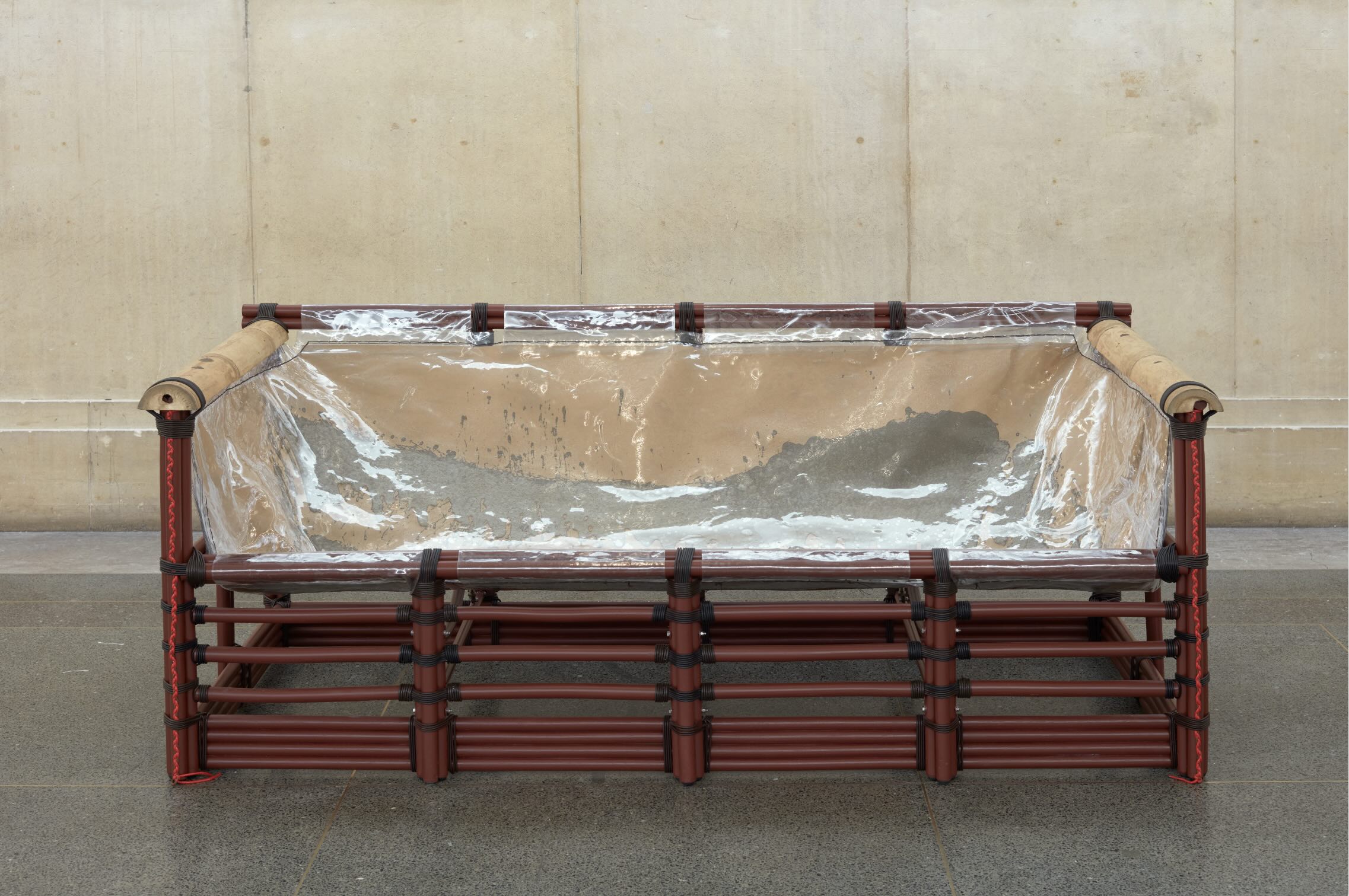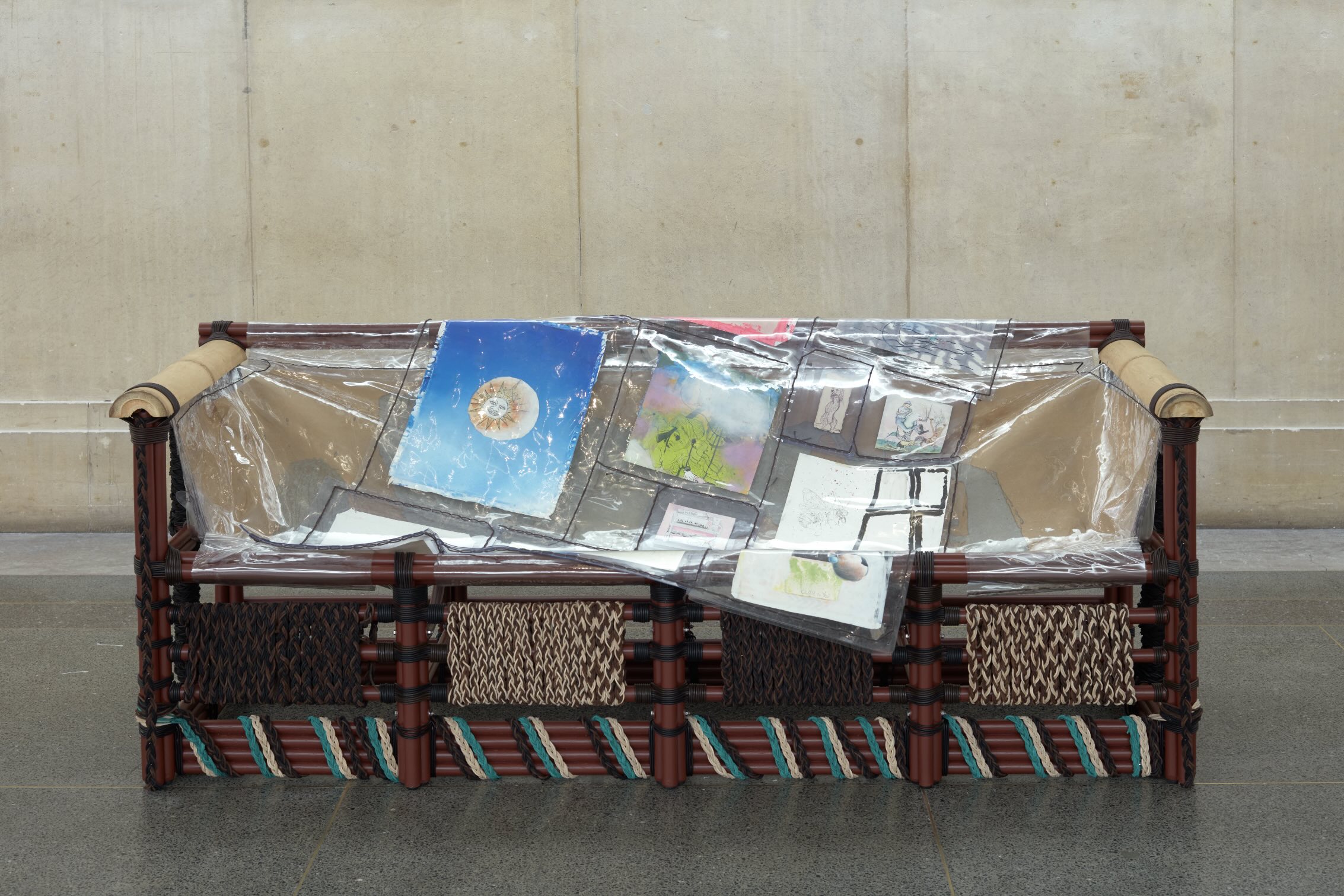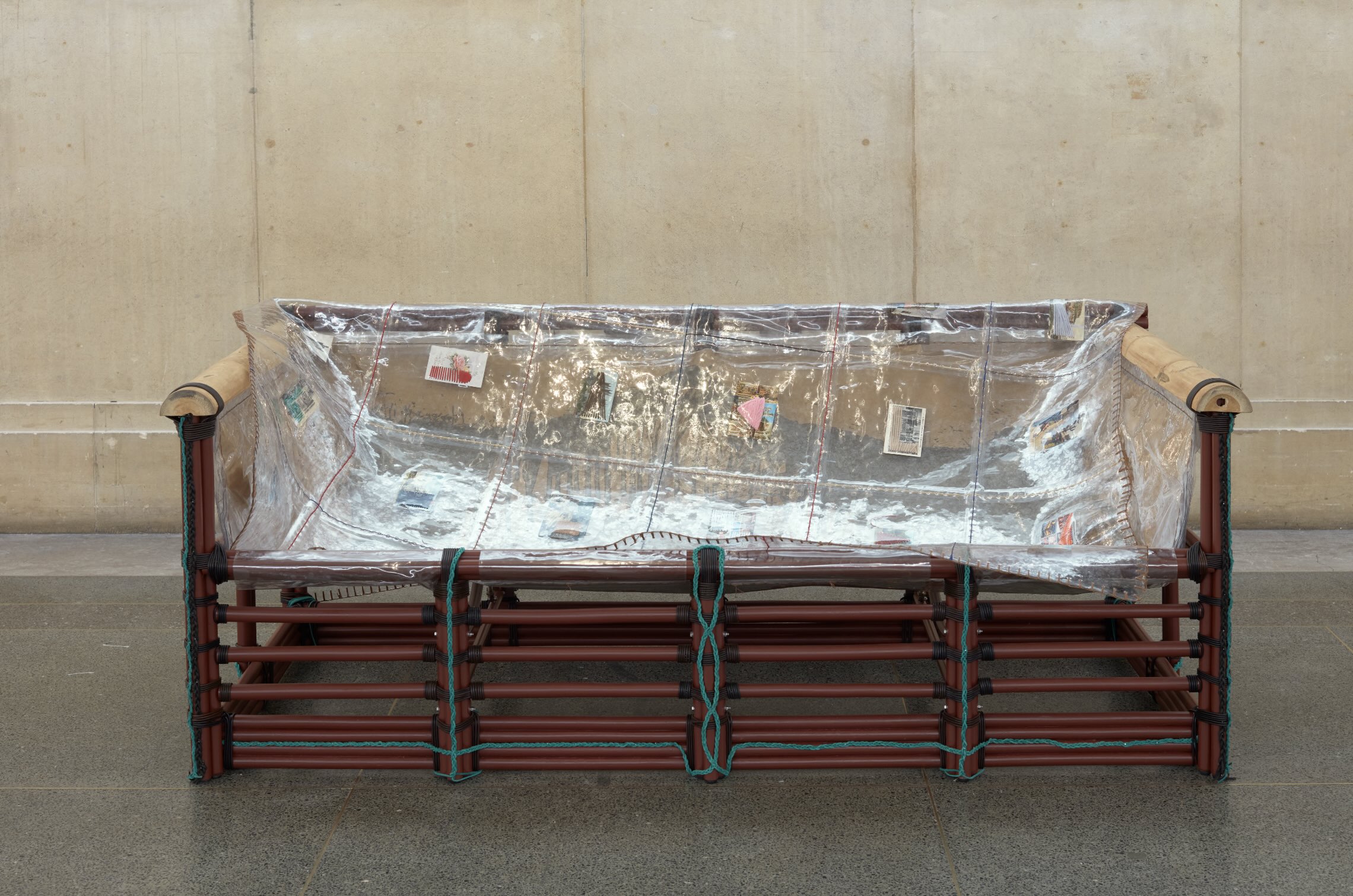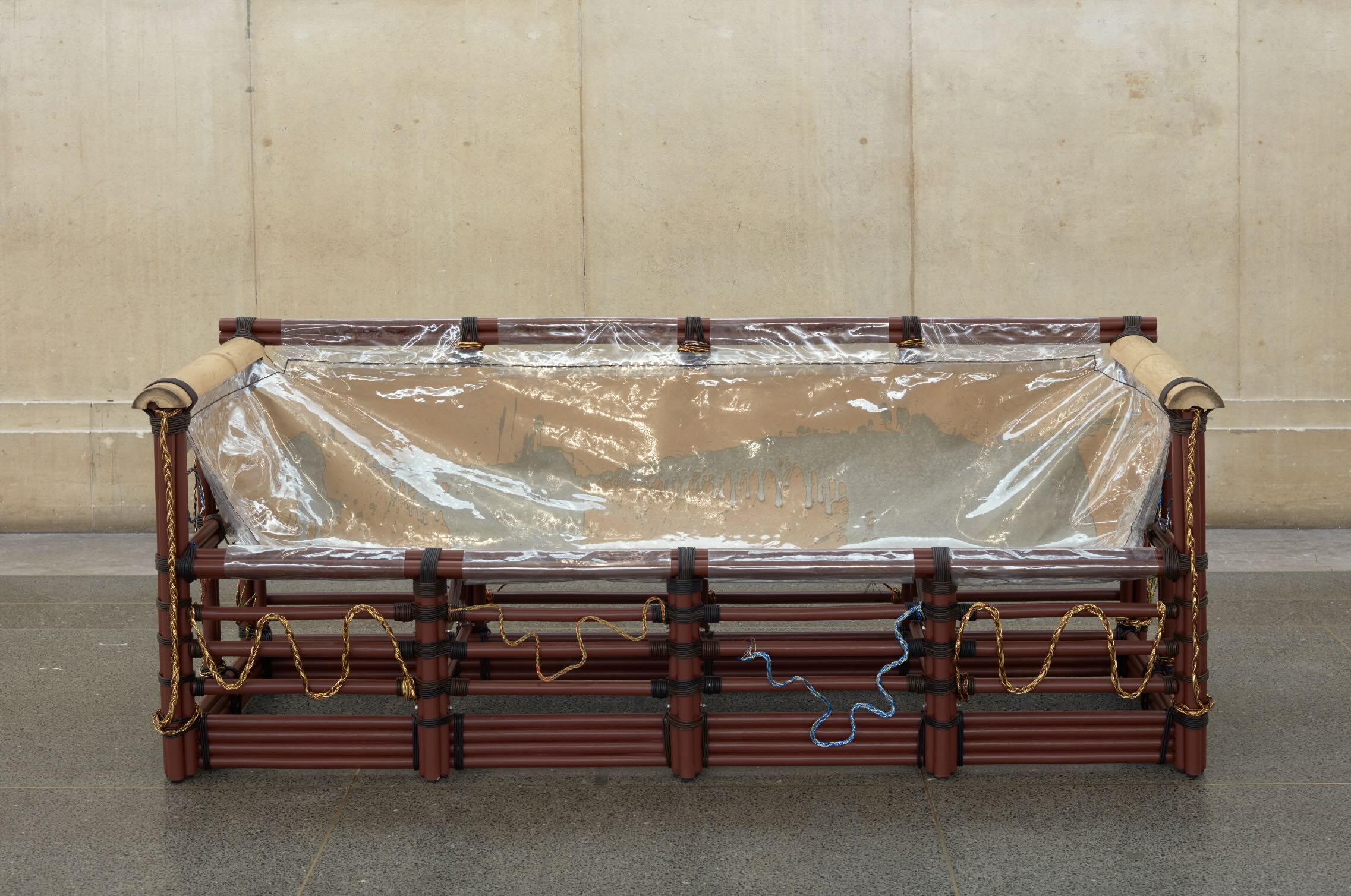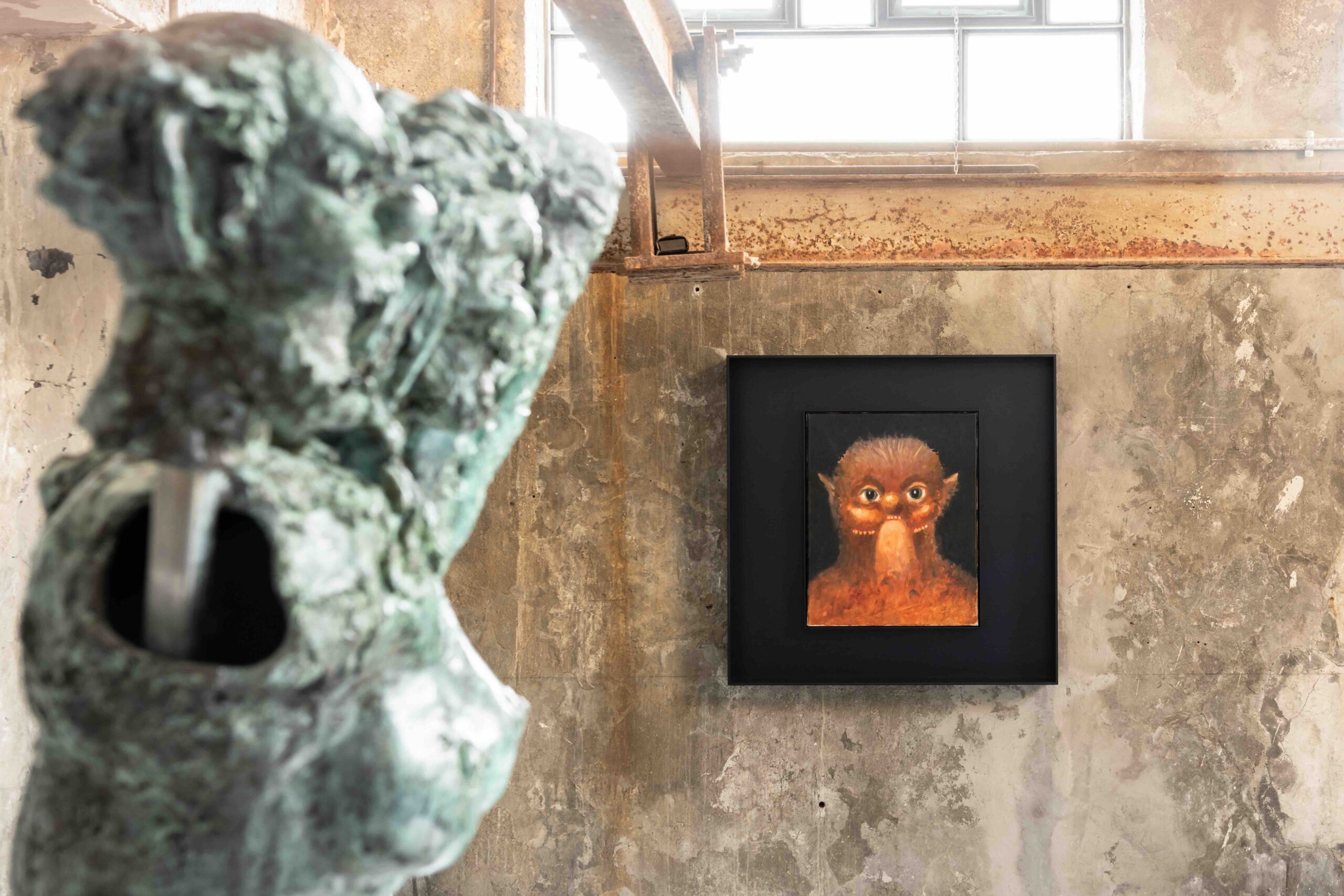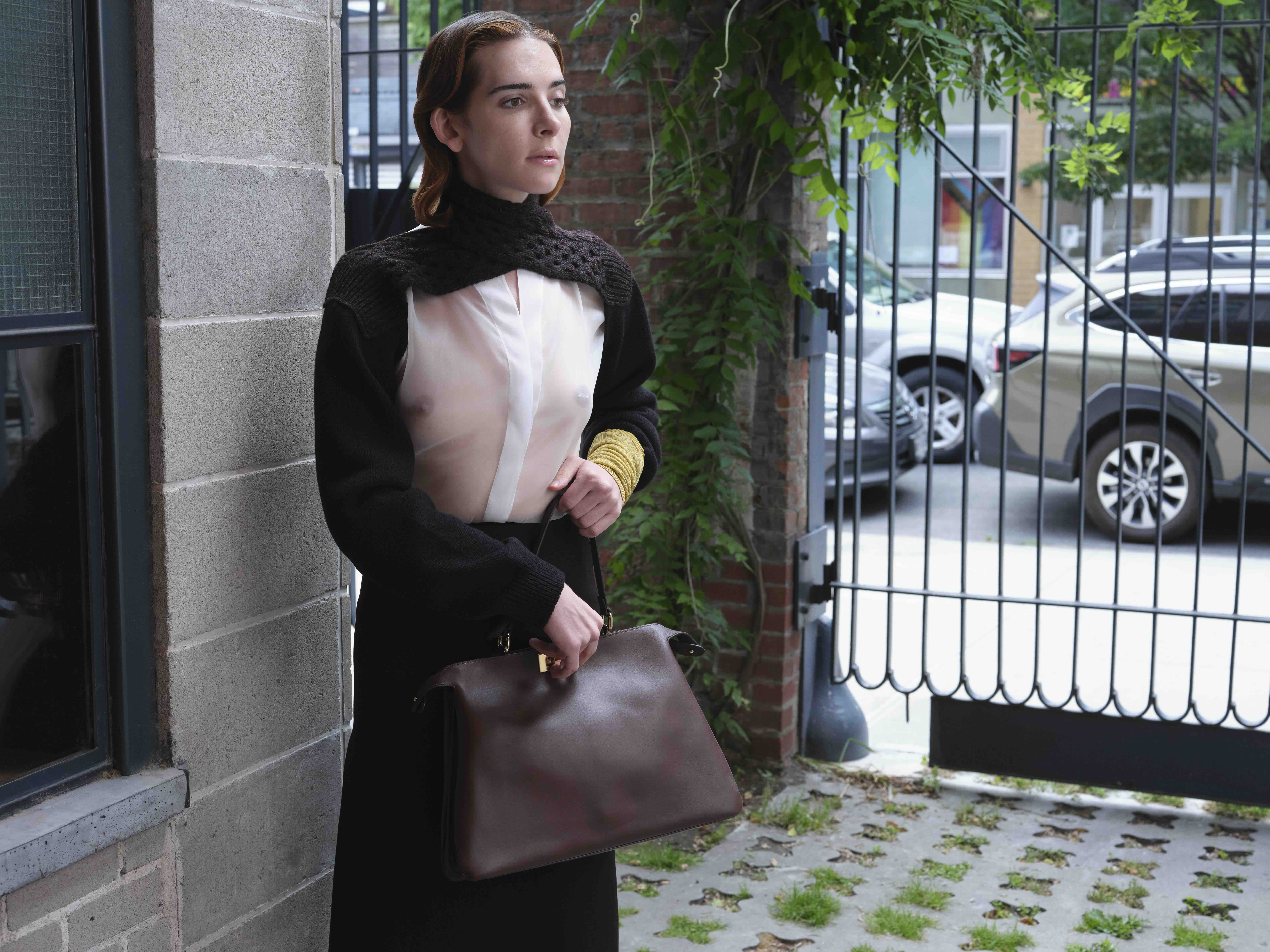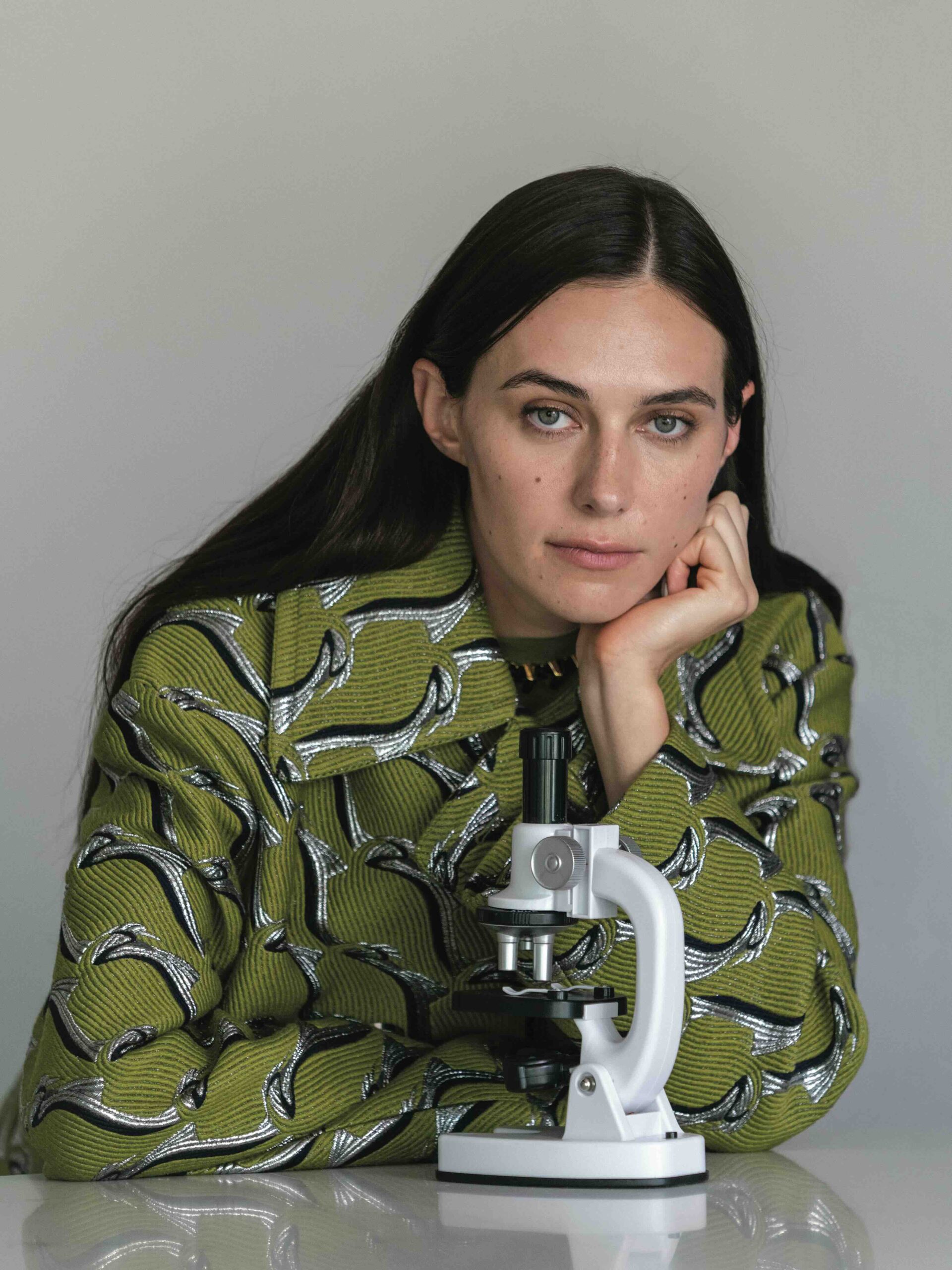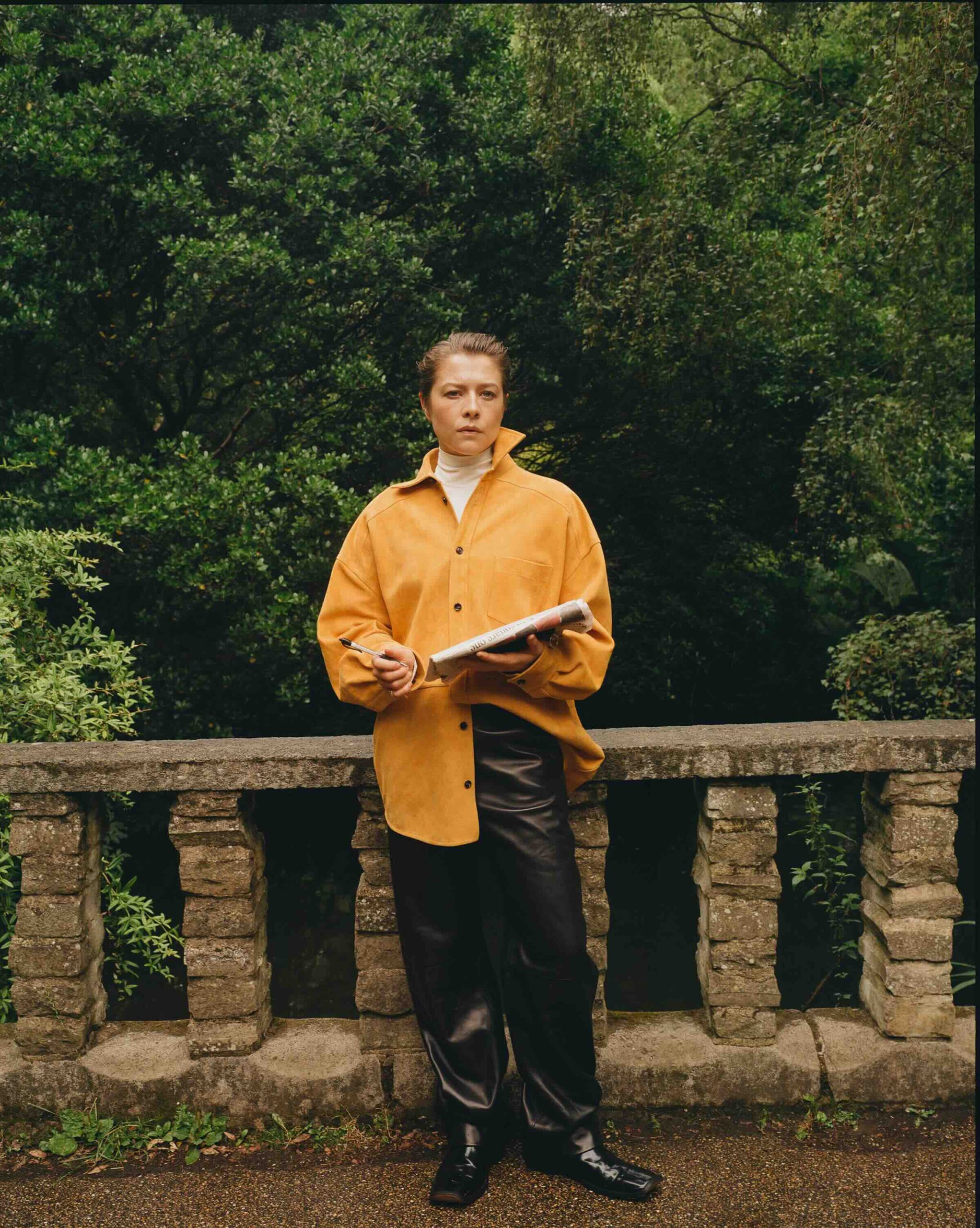London, May 30th
Alvaro Barrington in conversation with Maddalena Iodice
How are you feeling?
AB Good, a little braindead, it hurts to think as we’ve been doing so much thinking lately.
I’d like to start from the beginning of the Tate Commission and go back to the thoughts you were grappling with as you and your team started to work on it. Are there any issues that the intervention of artists from previous commissions like Phyllida Barlow 2014, Mike Nelson 2019 or Heather Phillipson 2022 raised for you?
AB Well, there was the formal idea of how to deal with the space as a form, and how most artists in the past had dealt with it. That space was built for Henry Moore’s sculptures so when you walked through the pathway, you would bump into his beautiful work. A lot of artists sort of treated the space in a similar way, which I think is really interesting. When it is not under commission, the space is usually filled with incredible shows like that of Rachel Whiteread, who is a huge hero of mine. When thinking about that space I was also reflecting on what it means to do a show at Tate Britain, about the fact that the building sits so close to the water, that it often rains in London and it goes on for a while. One day it was raining, so I walked into Tate and as I entered the security guards checked my bags. I thought oh, if this is what most people encounter, what should come next is a space for rest.
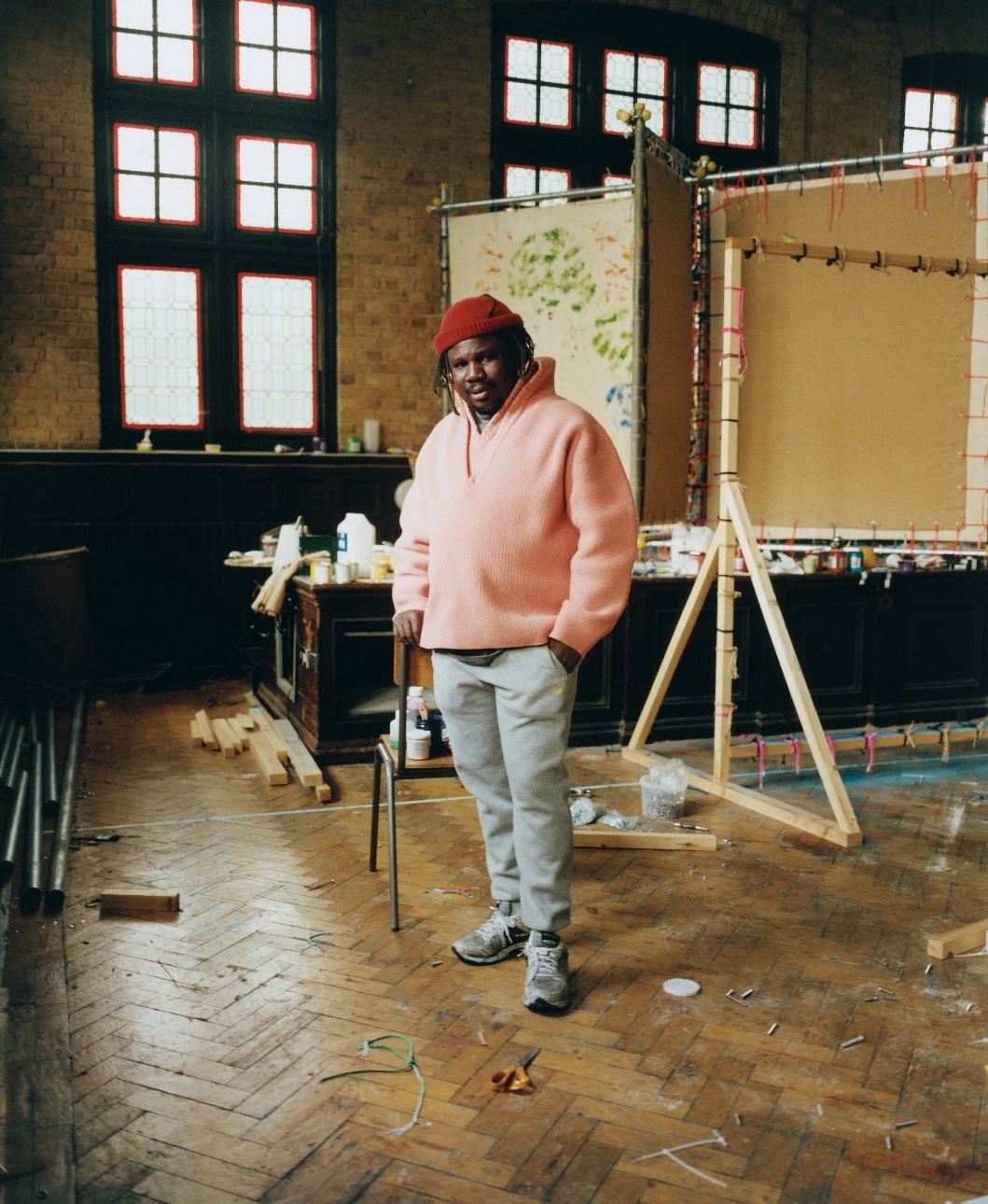
Sweater bottega veneta.
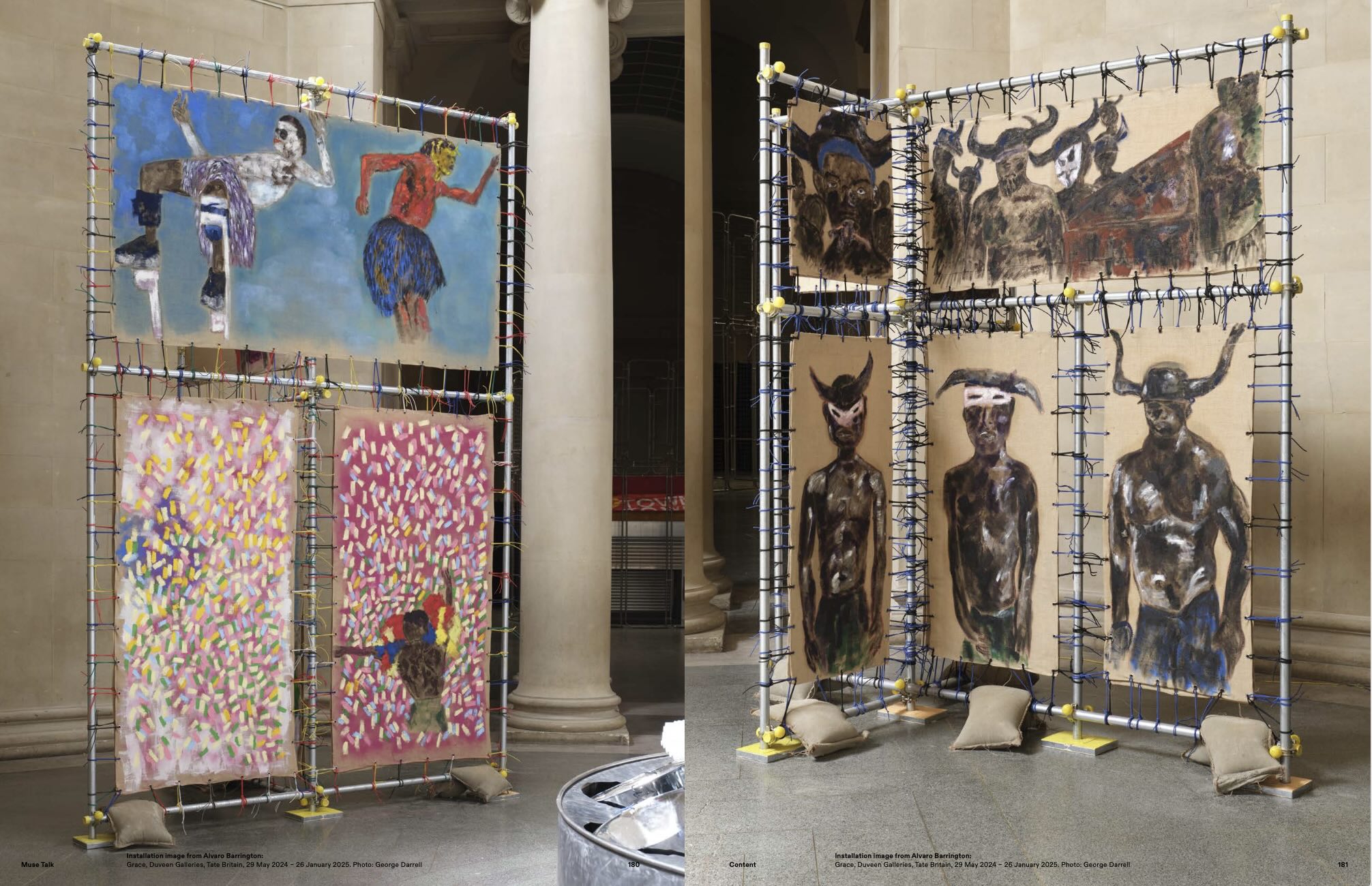
Yeah, as a spectator you find yourself immersed in an environment which definitely comes across as quite authoritarian. Not only because of the neo-classical architecture, but also because of that sort of bureaucratic process you go through as you enter.
AB Exactly. One of the ways to work with that space was to acknowledge these layers and think about how people deal with them before they go into the museum and get a chance to see the art.
I find the body holds an important role in the show. Not only in the way it is represented through presence and absence, but how the show interacts with the public’s body. The artworks ask to be activated which creates an interesting tension with the way the public tends to behave in the museum space, where usually only looking, walking and sitting are allowed.
AB Yeah, I was definitely curious about this idea of being in a space where you can’t really touch things, which connects with the memory of living with my grandma. In her living room everything was covered in plastic and we had to wait until a special guest came over for things to be used. There was this beautiful armoire full of china and trinkets and my cousins and I would always get into so much trouble for touching them. You know, it was like you don’t eat off these plates. Tapping into my own history, allowed me to engage with the logics of the space and incorporate elements like the sound of the hitting rain. The first room with the plastic benches is a place for rest and as I reflected on what rest looks like…
Music came in?
AB Yeah, I’m a huge fan of music. As someone in their forties, I’m not discovering music in the same way that I used to. My niece always makes fun of me because I’m listening to old music, so I just thought, well, what was it like when I fell in love with music? And it was just like sitting in the living room, hearing the rain, listening to the radio. As we reproduced this experience in the Duveen Galleries we realized the sound of water was a soundtrack, the thunderstorm was a soundtrack and the idea came to have them mixed with the music of artists I know and admire.
The show’s structure really has its own tempo. As you navigate from a room to the other the rhythm changes. From the layered soundtracks of the first room, to the second where people are invited to play the communal Carnival drum, to the last one where the repetitive sound of the corner store’s shutter produces a reflective, somber atmosphere. Drawing from your personal history you articulated a narration that is somehow universally relatable.
AB I always think great artists should be deeply personal but not necessarily in a diaristic way, you know. Sometimes when you read somebody’s diary you feel as if you are some sort of voyeur, which can be interesting but it wasn’t necessarily where I wanted the exhibition to go. Tracey Emin is someone I deeply admire for her way of dealing with the personal and whose approach is among those who inspired my way of channeling my own experience.
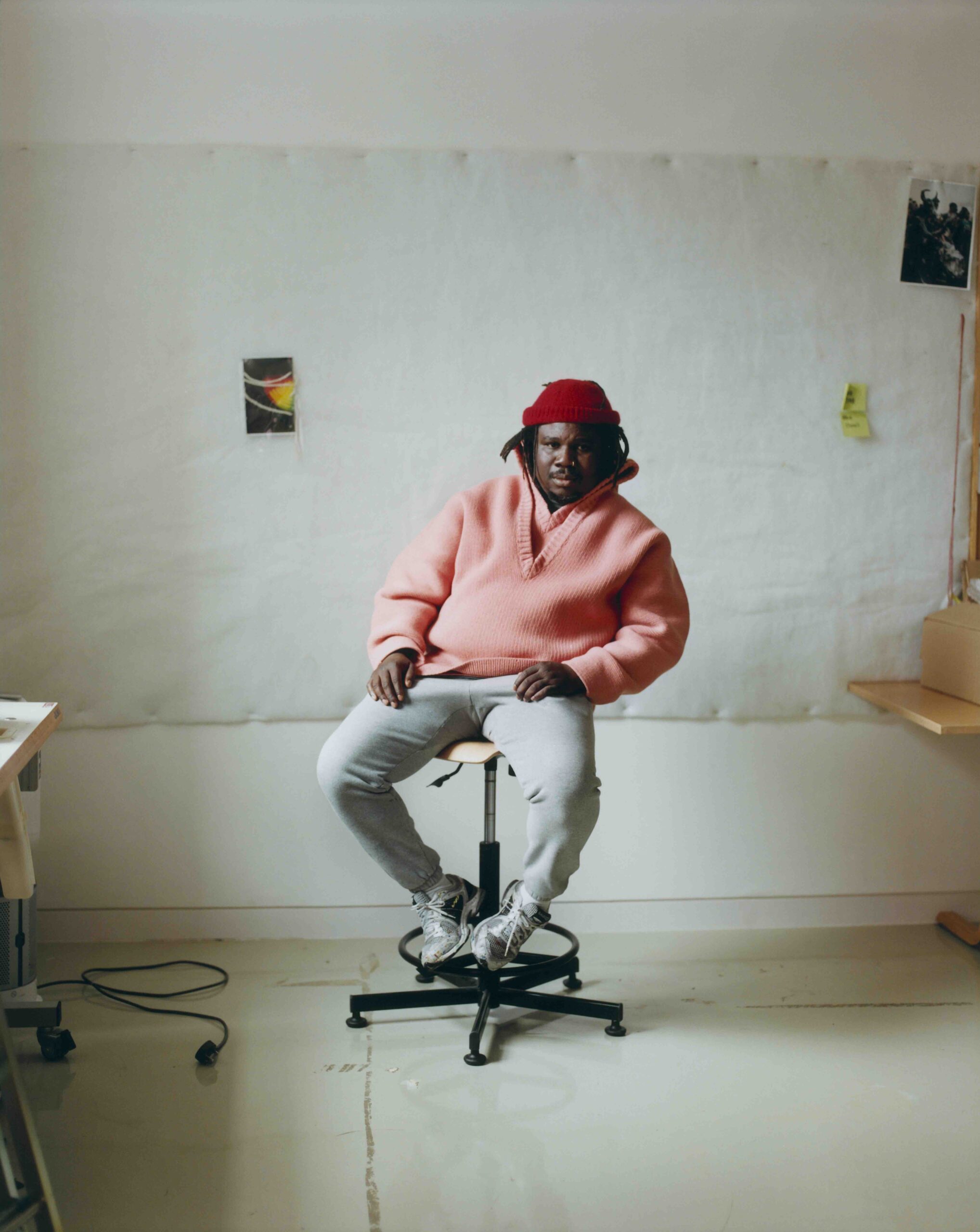
Sweater bottega veneta.
“It is through the art that we connect to people who are down for the same ride and hopefully we can create a culture people recognize themselves in. As an artist I just have to be honest and let people feel”.
Is there something you learned about your practice as a result of working on this project?
AB One of the challenges that I had to face was that I’m a painter and that I feel the most comfortable when being in my studio by myself, painting, looking at reference books, going down to the museum, thinking about an artist and coming back to my studio. But I realized putting paintings on a wall was probably the least interesting thing for the Duveen commission. So I decided to reflect on the notion of framing and how I could frame something in a much more interesting way than just like a square around the painting. I wondered how would I frame my paintings through an installation? Which brought in many great collaborations such as those with Teresa Farrell, Femi Adeyemi, Kelman Duran, Andrew Hale, Devonté Hynes, Olukemi Lijadu, Mangrove Steelband, Samantha Harrison, L’Enchanteur, Jawara Alleyne, and Mica Hendricks. I took the team to Milan, Florence, Venice and Rome to see the churches. Spending time there made me realize that the whole experience of being in the church, of bumping into a Caravaggio’s work was framed by the presence of the obelisk just outside and by the neighborhood the church was built for. All these layers were as interesting and important as the Caravaggio itself so we really wanted to work with people who were passionate as we are. Like, Dev is just as passionate about music as I am about painting.
What making space for new collaborations meant for the evolution of the work?
AB Well, it meant that I had to really consider the collaborators, you know, and let ideas morph. When talking with Samantha about the sculpture I realized that if I painted her it would have made the work about something else. But if it is a sculpture that is dressed up, it makes it about how folks in carnival paint. Not through the painting, but in the way they put clothes together and colors and think about the body. So my painting in the rotunda area became a framing stage for Samantha to shine. I looked a lot at Rauschenberg’s stages or what Picasso and the Dada artists did.
Read the full interview on Muse September Issue 64.
